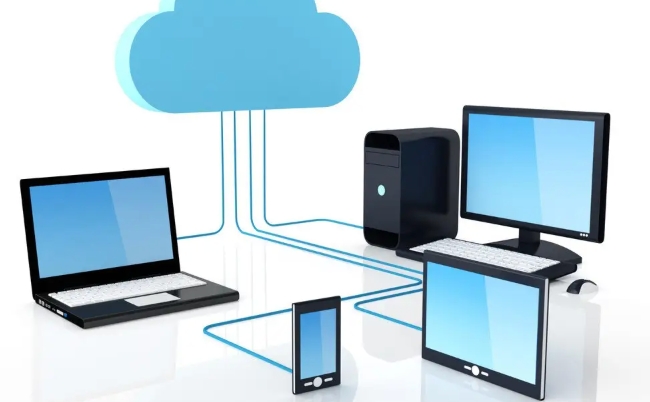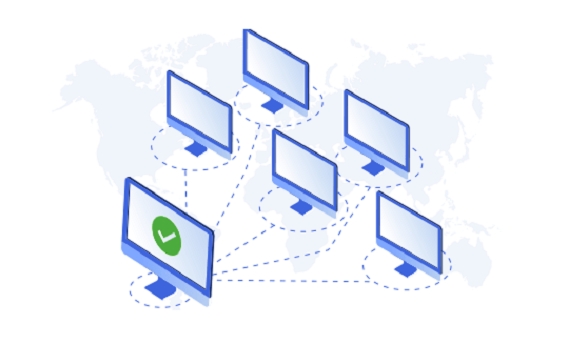To use remote desktop, first ensure system support, only Pro versions of Windows 10/11 and other versions have this function; secondly, enable remote desktop in "Settings" and configure security options; then use the Remote Desktop application to enter the target computer name or IP address to connect; finally troubleshoot common problems such as firewall, network type, router port forwarding and login information are correct. In addition, the remote computer must be kept on and logged in.

Remote Desktop is a super handy tool if you need to access your computer from another location. Whether you're working remotely or just want to grab a file from your home PC, setting it up isn't too bad — as long as you know the steps.

1. Make Sure Your System Supports Remote Desktop
Not every version of Windows has Remote Desktop enabled by default. It's available on Pro editions of Windows 10 and 11, as well as some older versions like Windows 8 Pro and Windows 7 Professional. Home editions don't support it out of the box.

If you're using a supported version, here's how to check:
- Press Windows key R , type
sysdm.cpl, and hit Enter. - Go to the Remote tab.
- Under "Remote Desktop," make sure "Allow remote connections to this computer" is checked.
Also, keep in mind that only one user can use Remote Desktop at a time unless you set up additional tools or licensing.

2. Enable Remote Desktop Settings
Once you've confirmed your system supports it, you'll need to turn it on through settings:
- Open Settings > System > Remote Desktop .
- Toggle on Enable Remote Desktop .
You might also see an option to allow connections from computers running any version of Remote Desktop (less secure) — only check that if you know you need it. Otherwise, stick with the default, which requires Network Level Authentication.
3. Connect to Another Computer
Now that your host machine is ready, here's how to connect from another device:
- On the device you're connecting from , open the Remote Desktop app (available for Windows, macOS, iOS, and Android).
- Type in the computer name or IP address of the machine you want to access.
- Click Connect .
- Enter your username and password when prompted.
A few things to note:
- You'll need to use the full username format if you're not on the same network — something like
COMPUTERNAME\username. - If you're connecting over the internet (not just your local network), you'll probably need to set up port forwarding on your router (more on that below).
4. Troubleshooting Common Issues
Sometimes it doesn't work right away, and here are the most common reasons why:
- Firewall blocking : Make sure the Windows Defender Firewall (or whatever firewall you're using) allows Remote Desktop through both private and public networks.
- Network type : If your PC is connected via a public network, Remote Desktop might be blocked by default for security. Switching it to a private network often helps.
- Router settings : If you're connecting from outside your home network, you need to forward port 3389 (default for RDP) to the internal IP of your target PC.
- Incorrect login info : Always double-check the username and password — especially the domain or computer name prefix.
One thing people often forget: your remote PC needs to stay awake and logged in. Check Power Settings to make sure it doesn't go to sleep automatically.
Basically that's it.
The above is the detailed content of How to set up Remote Desktop. For more information, please follow other related articles on the PHP Chinese website!

Hot AI Tools

Undress AI Tool
Undress images for free

Undresser.AI Undress
AI-powered app for creating realistic nude photos

AI Clothes Remover
Online AI tool for removing clothes from photos.

Clothoff.io
AI clothes remover

Video Face Swap
Swap faces in any video effortlessly with our completely free AI face swap tool!

Hot Article

Hot Tools

Notepad++7.3.1
Easy-to-use and free code editor

SublimeText3 Chinese version
Chinese version, very easy to use

Zend Studio 13.0.1
Powerful PHP integrated development environment

Dreamweaver CS6
Visual web development tools

SublimeText3 Mac version
God-level code editing software (SublimeText3)
 How to create a custom brush in Photoshop
Jul 08, 2025 am 01:01 AM
How to create a custom brush in Photoshop
Jul 08, 2025 am 01:01 AM
The steps to create a custom brush in Photoshop are as follows: 1. Select a pattern with clear edges and suitable for brushes, such as hand-painted textures or photo parts, and adjust it to the appropriate size; 2. Use the "Magic Wand Tool" or "Quick Selection Tool" to remove the background to ensure that the pattern is in an independent selection; 3. Create a basic brush through "Edit > Define Brush Presets"; 4. Adjust the parameters such as "Shape Dynamic", "Scatter", "Text" and "Transfer" in the "Brush" panel to make the strokes more natural; 5. Finally, click "Save As Brush" to save as a .abr file for convenience of subsequent use and sharing.
 How to use the quick selection tool in Photoshop
Jul 06, 2025 am 12:01 AM
How to use the quick selection tool in Photoshop
Jul 06, 2025 am 12:01 AM
Photoshop's quick selection tool is suitable for selecting areas with similar colors and clear boundaries. The usage methods include: 1. Find and activate the tool, right-click or long-press to switch or press the shortcut key W to ensure that the layer is unlocked; 2. Adjust the brush size, combine the Alt or Option key to switch the selection mode, Shift key to add selection, and improve accuracy through the option bar setting sampling method; 3. Use the "Select the Subject" function to assist in selection, and then manually optimize edge details, especially suitable for portraits or product images.
 How to recover a corrupted AutoCAD file?
Jul 09, 2025 am 01:16 AM
How to recover a corrupted AutoCAD file?
Jul 09, 2025 am 01:16 AM
When AutoCAD file is corrupted, you can take the following steps to try to restore: 1. Check the automatic backup of the file, check whether there is a .bak or .sv$ file in the folder where the original .dwg file is located, and rename the .bak file to .dwg to open it; 2. Use the RECOVER command to try to repair the file, and if it fails, use the -OPEN command to open the file for partial recovery; 3. Use third-party tools such as DataNumenDWGRepair, RecoveryToolboxforDWG, etc. to deal with seriously damaged files. To prevent future damage, you should save regularly and use "Save As" to refresh the file structure, keep the software updated, avoid saving through network drives, enable automatic save and set up
 How to fix remote desktop connection issues
Jul 08, 2025 am 01:03 AM
How to fix remote desktop connection issues
Jul 08, 2025 am 01:03 AM
Remote Desktop connection problems can be checked through the following steps: 1. Check the network and firewall settings to ensure that the TCP3389 port is open; 2. Confirm that the remote desktop function is enabled and supported by non-home version systems; 3. Verify user permissions and belong to the "RemoteDesktopUsers" group or administrator; 4. Handle black screen or lag, adjust the display options or restart the remote computer. Check them one by one in order, and most problems can be solved.
 How to remove password protection from a PDF in Adobe Acrobat?
Jul 05, 2025 am 12:36 AM
How to remove password protection from a PDF in Adobe Acrobat?
Jul 05, 2025 am 12:36 AM
To remove PDF password protection, use Adobe AcrobatPro and have the document owner password. The steps include: 1. Open Adobe AcrobatPro and select a password-protected PDF file; 2. Enter the correct owner password; 3. Go to "Tools" > "Protection" > "Encryption" > "Remove Security"; 4. Click "OK" in the pop-up window to confirm the removal. If AcrobatPro is not available, you can ask others for assistance or use third-party decryption tools, but you need to pay attention to privacy risks. Common problems include invalid password, grayed out security settings, and prompting for passwords after removal. The solution is to check password input, try to convert file formats, or update software versions. If it cannot be resolved, please contact A
 How to get Photoshop for free
Jul 12, 2025 am 12:34 AM
How to get Photoshop for free
Jul 12, 2025 am 12:34 AM
Adobe Photoshop does not have a permanent free version, but can be legally used in the following ways: 1. The official website provides a 7-day free trial, complete functions but automatic renewal is required; 2. Use a simplified version based on the browser (Beta), which supports basic editing functions; 3. Students or teachers can obtain a full-featured version through the school education plan; 4. Consider alternative software such as GIMP, Photopea, Krita or Canva Pixlr to meet daily needs. The above methods can meet the needs of different users and ensure legal and compliant use.
 AutoCAD 3D modeling tutorial
Jul 10, 2025 pm 12:20 PM
AutoCAD 3D modeling tutorial
Jul 10, 2025 pm 12:20 PM
Friends who are just beginning to get involved in AutoCAD3D modeling can start with the following steps: 1. Start practicing from basic geometry (such as cubes, cylinders, spheres), use BOX, CYLINDER, SPHERE and other commands to build simple models and combine them into complex structures; 2. Master Boolean operations (UNION merge, SUBTRACT cutting, INTERSECT intersection) to create solid models with holes or combined structures; 3. Pay attention to the settings of the view and coordinate system (UCS), switch the view angle to understand the structure, and ensure the correct operation direction by adjusting UCS; 4. After completing the modeling, it can be exported to STL, STEP or IGES format for easy printing or sharing, and use SECTIONPLANE







